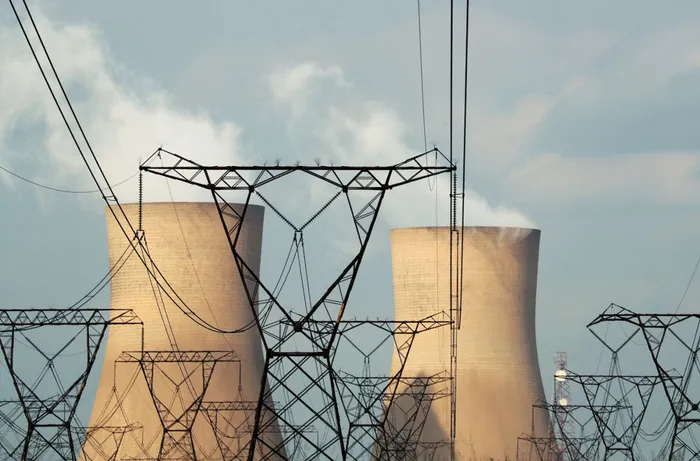Eskom admits to challenges in meeting 2030 emissions targets
ENERGY

Cooling towers at an Eskom coal-based power station in Duhva. Eskom’s head of generation Bheki Nxumalo on Wednesday revealed that the utility's existing power stations may struggle to meet the crucial emissions standards due to insufficient technology designed to curb nitrogen oxides (NOx) and sulphur oxides (SOx).
Image: Mike Hutchings/Reuters
South Africa's power utility, Eskom, has openly acknowledged significant hurdles in achieving the ambitious decommissioning targets set for the Just Energy Transition (JET) by 2030.
During a presentation to Parliament on Wednesday, Eskom’s head of generation Bheki Nxumalo revealed that the utility's existing power stations may struggle to meet the crucial emissions standards due to insufficient technology designed to curb nitrogen oxides (NOx) and sulphur oxides (SOx).
"The emissions standards post-2030 call for reduction much more aggressively. That's where the risks are because stations have different technologies. We are now on a drive for emissions abatement technologies post-2030 but its not all of them that will be ready, including Medupi," Nxumalo said in response to questions from MK Party MP, Brian Molefe.
"Kusile will meet most of the requirements but it is going to be an issue to comply with that. Most will but the "NOx and SOx" will require more in refurbishment."
Nxumalo said Eskom was doing economic studies on its overall Flue Gas Desulphurization (FGD) strategy from exemptions granted by the Department of Fisheries and Forestries and Environment (DFFE), not only for Kusile and Medupi's compliance, with stricter emission standards.
"We are preparing to go to market but also considering the number of units. We are not going to do all of them by 2030, implementation will go post-2030," Nxumalo said.
"We are not only looking at Medupi for reduction of the carbon footprint and also the NOx and SOx across the fleet. The research team is busy at work looking at other means we can employ in units running post-2030."
Eskom Group Executive for Renewables, Rivoningo Mnisi, said the power utility had made a breakthrough in other global entities taking over the slack left by the US withdrawing its more than $1.5 billion commitments to South Africa's JET programme.
"Dynamics and changes from the US have changed how we traditionally view funding, but it comes with opportunities. What we noticed is that the clean energy initiatives need to make business sense," Mnisi said.
"We have had engagements with the World Bank that sourced funding from various funders. They are quite aware of our 5-year projects and are quite keen and confident to support the funding requirement.
"We have also engaged with others [such as] the French Union. There is an appetite to partner. There is also interest from the Chinese funders interested in this. It's key how we go to market on this. We are working on the Public-Private Partnership (PPP) model, which should be structured to allow us offtake and show how projects will make money and what our contribution from the balance sheet will be.
"There is no shortage of funding to support the clean energy initiatives. What's more important is the governance structures to allow the PPP participation and the funding model to take place."
As part of its strategy, Eskom is considering blended financing to avoid restrictions from single funders that could conflict with its operational needs.
"We are in the process of shortlisting the supplier for the 72MW solar PV, while on the 150MW of gas the contract award is imminent and should be done potentially in the next two months," Mnisi said.
"We are also doing some assessment of the long duration energy storage as part of the options we can implement at Komati, as well Grootvlei solar PV and gas on plan. They should be delivered by 2029, a shift from what we did at Komati Development. Work for Arnot, Camden and Hendrina is also started and the intention is to ensure that all projects are implemented and operational before 2030."
BUSINESS REPORT